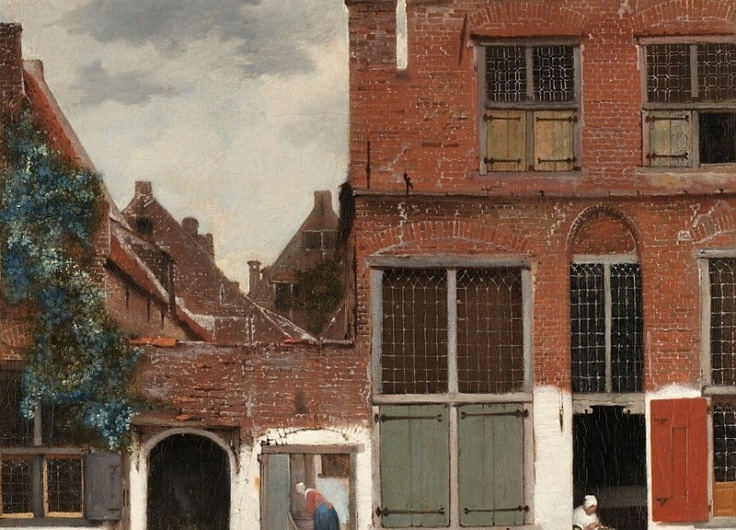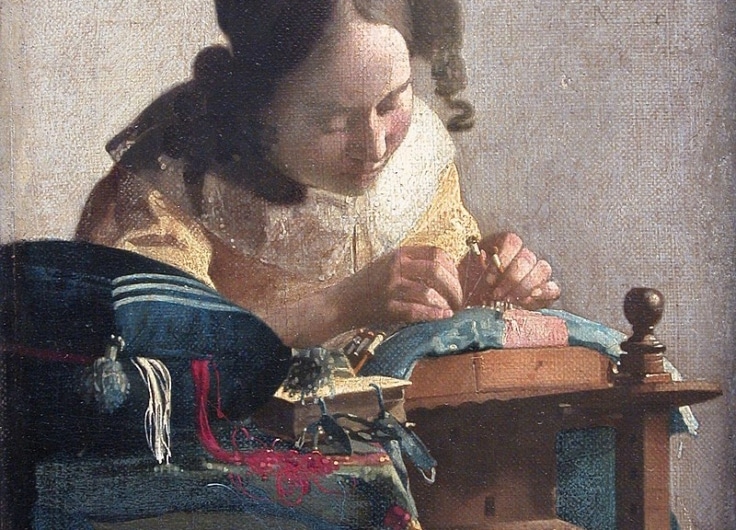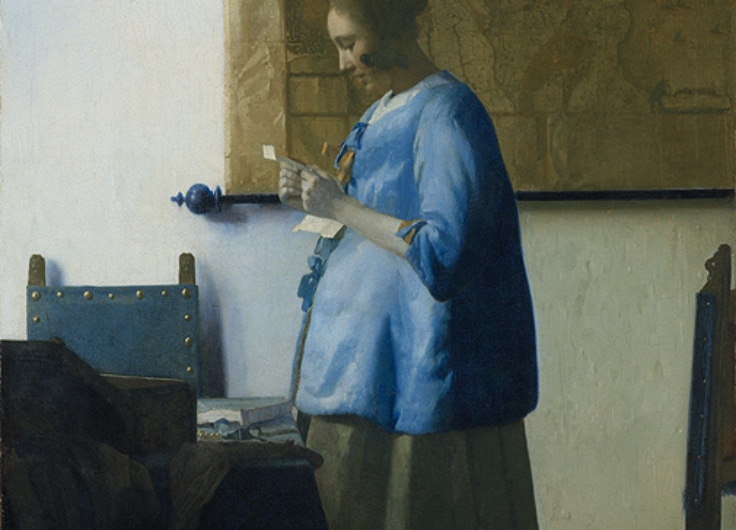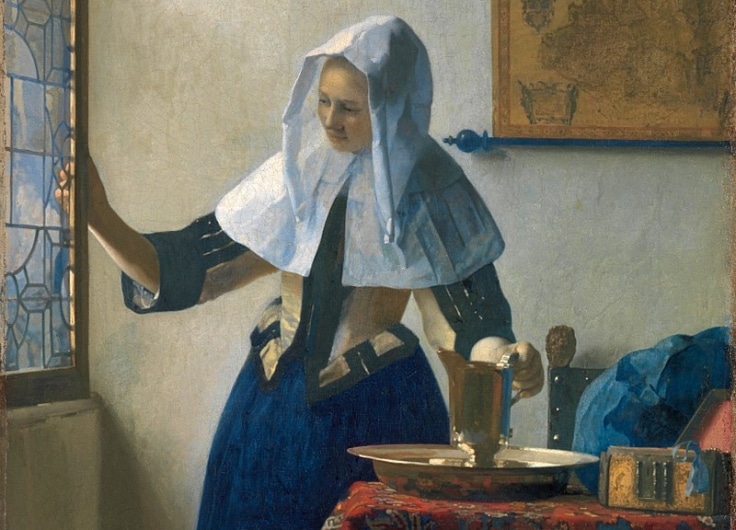An international team of scientists has brought us closer to Johannes Vermeer’ painting Girl with a Pearl Earring (c. 1665) than ever before. By employing multidisciplinary research, the team made discoveries about his brushwork, his use of pigments, and the way that he ‘built up’ this painting using different layers. The results of the Girl in the Spotlight research project – which used non-invasive imaging and scanning techniques, digital microscopy and paint sample analysis – offers a glimpse of a much more ‘personal’ painting than previously thought.
 Composite image of Girl with a Pearl Earring from images made during the Girl in the Spotlight project.
Composite image of Girl with a Pearl Earring from images made during the Girl in the Spotlight project.© Sylvain Fleur and the Girl in the Spotlight team
One of the most surprising findings was that the background is not simply an empty dark space; Vermeer painted the Girl in front of a green curtain. Imaging techniques visualised diagonal lines and colour variations that suggest folded fabric in the upper right-hand corner of the painting. The curtain has disappeared over the course of the centuries as a result of physical and chemical changes in the translucent green paint.
While to the naked eye the Girl has always appeared to have had no eyelashes, macro-X-ray fluorescence scanning, and microscopic examination also revealed that Vermeer painted tiny hairs around both eyes. These discoveries make the Girl
more ‘personal’ than previously thought, but the question of who exactly the Girl was still remains a mystery.
 Right: The macro-X-ray fluorescence (MA-XRF) map for iron (Fe) shows that Vermeer painted eyelashes using a brown paint. The tip of the eyelash is barely visible against the discoloured dark background.
Right: The macro-X-ray fluorescence (MA-XRF) map for iron (Fe) shows that Vermeer painted eyelashes using a brown paint. The tip of the eyelash is barely visible against the discoloured dark background.© Annelies van Loon: Mauritshuis/Rijksmuseum
Composition
The recent study also brought us closer to Vermeer and his subtle painting techniques. Vermeer began composing the painting in various shades of brown and black. Infrared imaging visualised broad vigorous brushstrokes in these underlayers, which now lie beneath the visible paint. He painted the contours of the Girl with thin black lines.
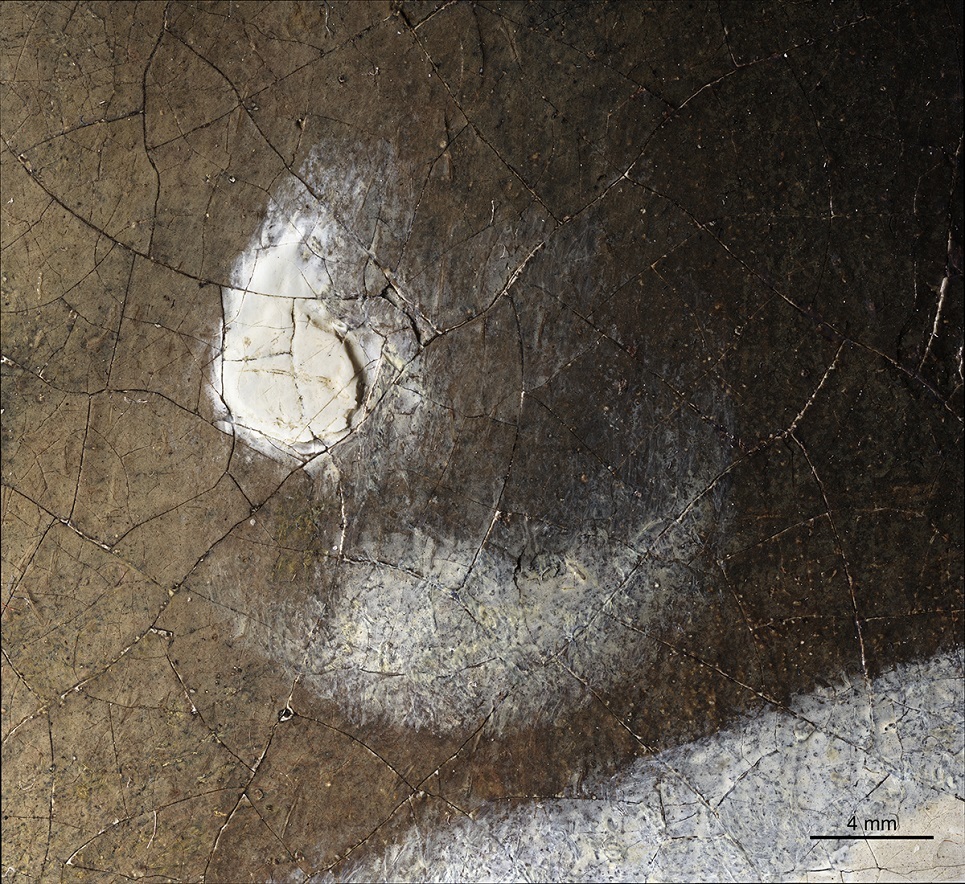 A 3D digital microphotograph shows the pearl at 140x magnification (1.1 μm/pixel)
A 3D digital microphotograph shows the pearl at 140x magnification (1.1 μm/pixel)© Hirox Europe, Jyfel
The new research revealed that Vermeer made changes to the composition during the painting process: the position of the ear, the top of the headscarf and the back of the neck were shifted. The painter worked systematically from the background to the foreground: after painting the greenish background and the skin of the Girl’s face, he then successively applied her yellow jacket, white collar, headscarf and ‘pearl’.
The pearl is an illusion – translucent and opaque touches of white paint – and the hook to hang the ‘pearl’ from her ear is missing. Lastly, Vermeer signed his artwork in the upper left-hand corner with IVMeer. Here and there, fine hairs from Vermeer’s brush have been left behind.
Colour Palette
The research identified and accurately mapped Vermeer’s colour palette in this painting for the first time: red (vermilion, and red lake made from cochineal), various shades of yellow and brown (earth pigments, lead-tin yellow and yellow lake), blue (ultramarine and indigo), shades of black (charcoal and bone black) and white (two kinds of lead white). Vermeer carefully selected two lead white pigments with different optical and handling properties in order to achieve a subtle transparency and seamless transition from light to shadow in the Girl’s skin.
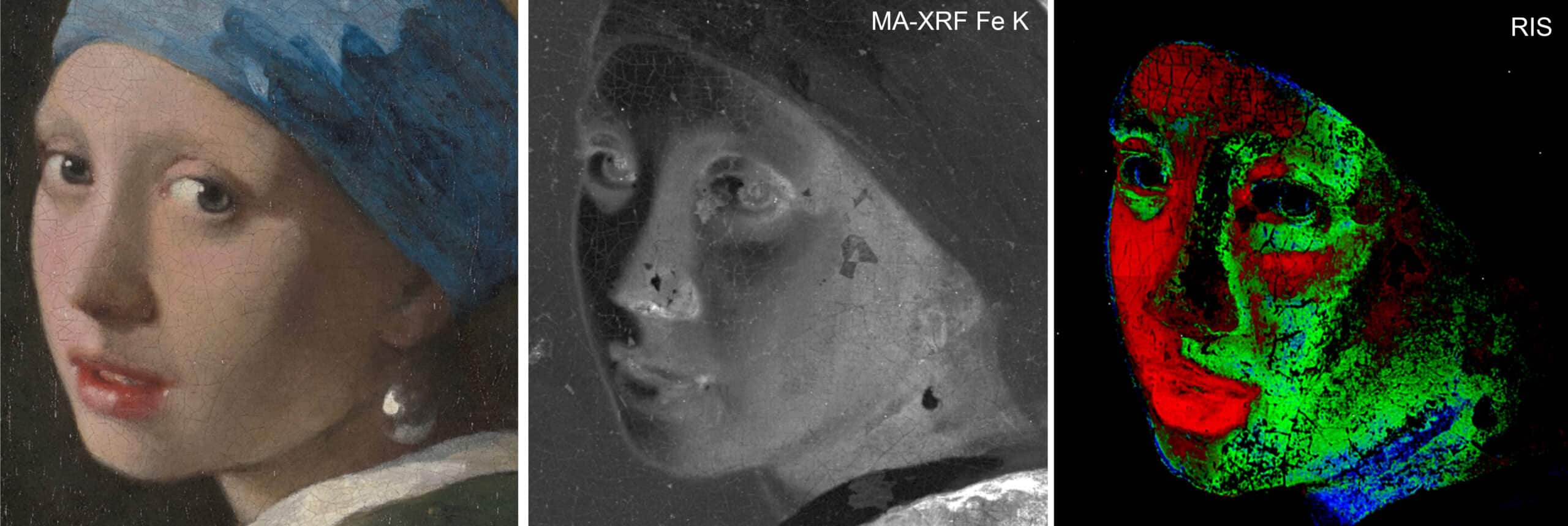 Vermeer used different pigments and paint mixtures to paint the Girl’s face.
Vermeer used different pigments and paint mixtures to paint the Girl’s face.© René Gerritsen Art & Research Photography / © Annelies van Loon: Mauritshuis/Rijksmuseum / © John Delaney and Kate Dooley: National Gallery of Art, Washington
More precious than gold
The raw materials for the colours came from all over the world: regions that today belong to Mexico and Central America, England and possibly Asia or the West Indies. Vermeer’s liberal use of high-quality ultramarine in the headscarf and the jacket is striking. Made from the semi-precious stone lapis lazuli that came from what is now Afghanistan, the preparation of natural ultramarine was time-consuming and laborious. In the 17th century, the pigment was more precious than gold. One discovery from the recent project is that the stone may have first been heated at a high temperature, which made it easier to grind and produced a more intense blue colour.
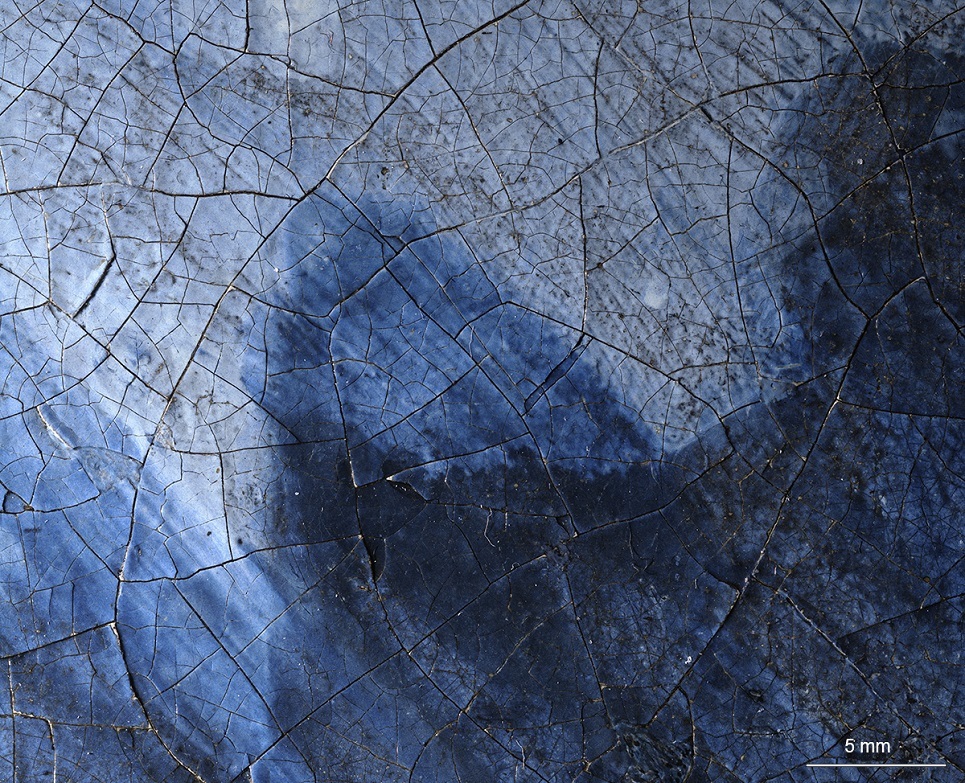 3D digital microphotograph of the blue headscarf at 140x magnification (1.1 μm/pixel).
3D digital microphotograph of the blue headscarf at 140x magnification (1.1 μm/pixel).© Hirox Europe, Jyfel
The Girl in the Spotlight
In February and March 2018, an international team of scientists and conservators undertook a technical examination of Vermeer’s Girl with a Pearl Earring
using state-of-the-art methods and techniques. The research team was led by Mauritshuis paintings conservator Abbie Vandivere. The Girl in the Spotlight was a Mauritshuis initiative and involved a team of internationally recognised specialists associated with the Netherlands Institute for Conservation+Art+Science+ (NICAS: Rijksmuseum, TU Delft, the Cultural Heritage Agency of the Netherlands (RCE) and the University of Amsterdam), together with the University of Antwerp, Vrije Universiteit Amsterdam, Shell Technology Centre Amsterdam, Hirox Europe, the National Gallery of Art, Washington and many other partners.
For more information:
- Online zoomable image of Girl with a Pearl Earring.
- Blog written by Abbie Vandivere, Head Researcher of the Girl in the Spotlight project
- Collection of 10 scientific articles in Heritage Science (free and open access)


